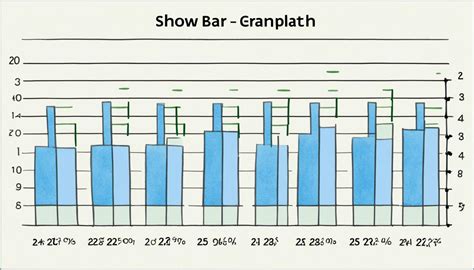What Is 24/30 As A Percentage
Kalali
Apr 05, 2025 · 4 min read

Table of Contents
What is 24/30 as a Percentage? A Comprehensive Guide
Converting fractions to percentages is a fundamental skill in mathematics with wide-ranging applications in various fields, from calculating grades and discounts to understanding financial reports and statistical data. This comprehensive guide will delve into the process of converting the fraction 24/30 into a percentage, explaining the underlying concepts and providing practical examples. We'll also explore different methods for solving this type of problem, empowering you with a thorough understanding of percentage calculations.
Understanding Fractions and Percentages
Before diving into the conversion, let's clarify the basics of fractions and percentages.
Fractions: A fraction represents a part of a whole. It consists of a numerator (the top number) and a denominator (the bottom number). In the fraction 24/30, 24 is the numerator and 30 is the denominator. This means 24 out of 30 parts of a whole.
Percentages: A percentage is a fraction where the denominator is always 100. It represents a proportion per hundred. For example, 50% means 50 out of 100, or 50/100. Percentages are commonly used to express proportions, rates, and changes.
Method 1: Converting the Fraction Directly
The most straightforward method to convert 24/30 to a percentage involves two simple steps:
Step 1: Convert the fraction to a decimal:
To convert a fraction to a decimal, divide the numerator by the denominator:
24 ÷ 30 = 0.8
Step 2: Convert the decimal to a percentage:
To convert a decimal to a percentage, multiply the decimal by 100 and add the "%" symbol:
0.8 × 100 = 80%
Therefore, 24/30 is equal to 80%.
Method 2: Simplifying the Fraction First
Before converting to a decimal, simplifying the fraction can make the calculation easier. Both 24 and 30 are divisible by 6:
24 ÷ 6 = 4 30 ÷ 6 = 5
This simplifies the fraction to 4/5. Now, we repeat the steps from Method 1:
Step 1: Convert the simplified fraction to a decimal:
4 ÷ 5 = 0.8
Step 2: Convert the decimal to a percentage:
0.8 × 100 = 80%
As you can see, simplifying the fraction beforehand doesn't change the final result; it just streamlines the process.
Method 3: Using Proportions
This method uses the concept of proportions to solve for the percentage. We can set up a proportion:
24/30 = x/100
Where 'x' represents the percentage we're trying to find. To solve for 'x', we cross-multiply:
30x = 2400
Then, divide both sides by 30:
x = 2400 ÷ 30 = 80
Therefore, x = 80%, confirming our previous results.
Practical Applications of Percentage Calculations
Understanding how to convert fractions to percentages is crucial in many real-world scenarios:
-
Academic Performance: If you answered 24 out of 30 questions correctly on a test, your score is 80%.
-
Sales and Discounts: A store offering an 80% discount means you pay only 20% of the original price.
-
Financial Analysis: Understanding percentage changes in stock prices, interest rates, or investment returns is essential for making informed financial decisions.
-
Data Analysis and Statistics: Percentages are frequently used to represent proportions within data sets, facilitating comparisons and interpretations.
-
Surveys and Polls: Results from surveys and polls are often presented as percentages to easily understand public opinion or trends.
Advanced Concepts and Further Exploration
While the conversion of 24/30 to 80% is relatively straightforward, let's explore some related concepts that build upon this fundamental skill:
-
Percentage Increase and Decrease: Calculating percentage changes involves finding the difference between two values and expressing it as a percentage of the original value. For example, if a price increases from $50 to $60, the percentage increase is 20%.
-
Compound Interest: This involves calculating interest on both the principal amount and accumulated interest. Understanding percentage calculations is crucial for comprehending compound interest growth.
-
Statistical Significance: In statistical analysis, percentages are used to determine the significance of results, indicating the likelihood that observed differences are not due to random chance.
-
Working with Percentages in Spreadsheets: Software like Microsoft Excel and Google Sheets offers built-in functions for performing percentage calculations, simplifying complex tasks.
Troubleshooting Common Mistakes
When working with percentages, several common mistakes can occur:
-
Incorrect Decimal Placement: Carefully ensure the decimal point is correctly placed when converting between decimals and percentages.
-
Mixing up Numerator and Denominator: Always remember that the numerator is divided by the denominator.
-
Forgetting to Multiply by 100: Don't forget to multiply the decimal by 100 to convert it to a percentage.
Conclusion
Converting fractions to percentages is a valuable mathematical skill applicable in numerous contexts. The conversion of 24/30 to 80% can be achieved using several methods, each offering a slightly different approach. Understanding these methods, along with the broader applications of percentage calculations, empowers you to confidently tackle various quantitative problems and make informed decisions in diverse fields. By mastering this fundamental concept, you significantly enhance your mathematical proficiency and problem-solving abilities. Remember to practice regularly to solidify your understanding and refine your calculation skills. This will enable you to tackle more complex percentage-related problems with ease and accuracy.
Latest Posts
Latest Posts
-
Least Common Multiple Of 6 And 5
Apr 06, 2025
-
How Many Inches Is 55 Feet
Apr 06, 2025
-
How Big Is 14cm In Inches
Apr 06, 2025
-
40 Ml Is How Many Oz
Apr 06, 2025
-
A Controlled Scientific Test Of A Hypothesis Is Called
Apr 06, 2025
Related Post
Thank you for visiting our website which covers about What Is 24/30 As A Percentage . We hope the information provided has been useful to you. Feel free to contact us if you have any questions or need further assistance. See you next time and don't miss to bookmark.
